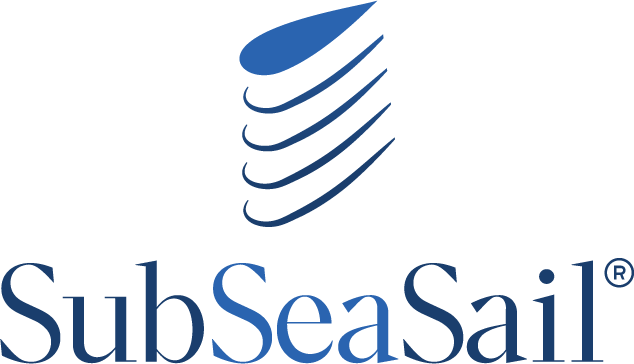Four Pillars to the Success of Our Unmanned Autonomous Surface Vessel (USV)
(Click to expand)
HORUS Semi-Submersible Vessel Features
*Real photo of HORUS Autonomous Unmanned Semi-Submersible Vessel, not a model rendering.
1. Payload Area
Cameras, antennas, lights, etc.
2. Wingsail
Transparent, hollow and lightweight. Floodable. Rotates around fixed kevlar mast.
3. Wingsail Control Mechanism
Patented all-mechanical module. Single point control — no lines, pulleys, or electronics.
4. Float Module
Buoyancy section. Upper region houses Inertial Measurement Unit (IMU) and electronics. Lower section houses ballast tank system for submerging. Serves as potential payload area.
5. Rudder
Rotates around fixed carbon fiber shaft. Contains interconnect between hull, floats, and wingsail.
6. Structural Keel
Increases stability and structural rigidity.
7. Thruster
Provides auxiliary power for maintaining position in pre-determined survey areas and near-shore navigation with light winds.
8. Stabilizer
Minimize pitch of platform in sea states.
9. Hull/Main Payload
Contains batteries, payload area and needed ballast. Can be modified and adapted to mission systems & requirements.
Solar Power Generation
Wingsail options available based on power vs. stealth requirements.

Easily Deployable
The current SubSeaSail™ Gen7 platform can be deployed by one-to-two persons from a dock or small boat without complex launch and recovery systems.
SubSeaSail’s commitment to sustainability
We address the UN 2030 Sustainable Development Goals
The simplicity of the SubSeaSail™ system means the investment and maintenance costs are far lower than comparable platforms. Comparative costs are low enough that the system could be considered “disposable”. We, however prefer to see each system come home whenever possible, gathering data along the way so as not to contribute to the debris in the ocean. Our philosophy is in-line with the following UN 2030 Sustainable Development Goals:
An Interface Designed for Convenience
Our user interface is simple and intuitive, requiring a minimum amount of training time.






